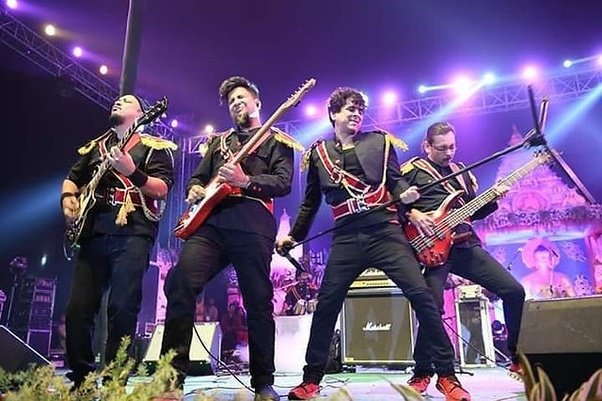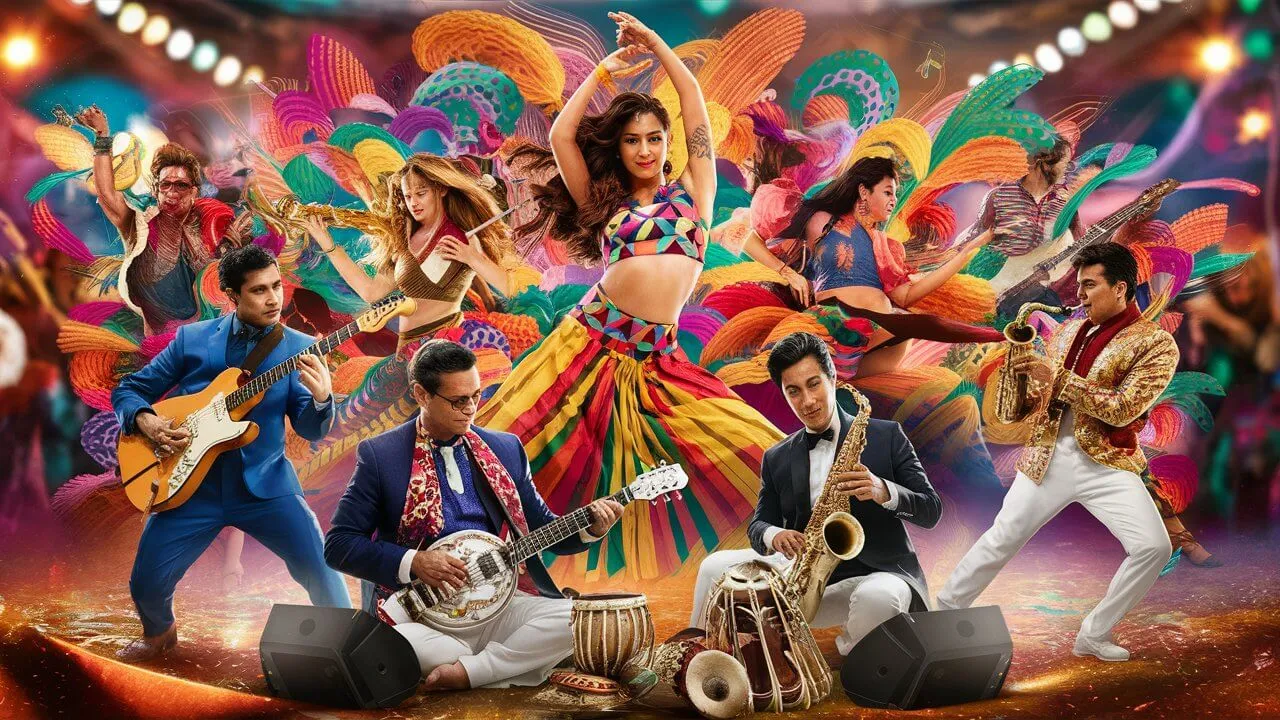Indian film music, particularly Bollywood, has always been at the forefront of cultural expression and innovation. In recent years, the industry has witnessed a dynamic transformation influenced by global trends, technological advancements, and evolving audience preferences. This article explores the contemporary trends in Indian film music, highlighting how these changes are reshaping Bollywood soundtracks and the broader music landscape.
1. Fusion Genres and Cross-Cultural Collaborations
**1. **Blending Traditional and Modern Styles
Overview: One of the most notable trends in Indian film music is the blending of traditional Indian sounds with modern genres. This fusion creates fresh and innovative compositions that appeal to diverse audiences.
Trends:
- Indian Classical Meets Electronic: The integration of classical instruments with electronic beats and synthesizers.
- Folk and Pop Fusion: Incorporating traditional folk elements into contemporary pop tracks.
Examples:
- “Tum Hi Ho” from Aashiqui 2: A blend of contemporary romantic melody with classical undertones.
- “Dil Dhadakne Do” from Zindagi Na Milegi Dobara: Combines traditional Punjabi folk elements with modern pop music.
2. Global Collaborations
Overview: Indian film music has increasingly collaborated with international artists, bringing global influences into Bollywood soundtracks.
Trends:
- International Artists: Collaborations with Western musicians and composers.
- Global Music Styles: Incorporating genres such as jazz, hip-hop, and reggae into Indian film music.
Examples:
- “Jai Ho” from Slumdog Millionaire: A collaboration with British artist A.R. Rahman and global influences.
- “Lean On” Remix: Featuring Indian music influences in the remix of Major Lazer’s international hit.
2. Digital Music Production and Distribution
**1. **Advancements in Music Technology
Overview: The rise of digital technology has revolutionized the production and distribution of Indian film music. Advanced software and digital platforms have streamlined the process and opened new creative possibilities.
Trends:
- Digital Audio Workstations (DAWs): Utilization of DAWs for creating complex compositions and soundscapes.
- Virtual Instruments and Effects: Use of virtual instruments and effects to enhance sound quality and versatility.
Examples:
- “Urvashi” from Hum: Showcases digital production techniques and innovative sound effects.
- “Tera Ban Jaunga” from Kabir Singh: Highlights the use of modern digital tools in music production.
2. Streaming Platforms and Online Distribution
Overview: The growth of streaming platforms has transformed how Indian film music is distributed and consumed, offering artists and composers new opportunities for reaching audiences.
Trends:
- Music Streaming Services: Platforms like Spotify, Apple Music, and Gaana have become primary sources for music consumption.
- Social Media Promotion: Use of social media for promoting music and engaging with fans.
Examples:
- “Shayad” from Love Aaj Kal: Released and promoted extensively through digital platforms.
- YouTube Releases: Music videos and tracks from Indian films gaining popularity through YouTube.
3. Emergence of New Talent and Independent Artists
**1. **Rise of Independent Composers and Singers
Overview: The Indian film music industry is witnessing a surge in independent composers and singers who are making their mark through innovative and original compositions.
Trends:
- Independent Releases: More artists are releasing their work independently, bypassing traditional music labels.
- Viral Hits: Songs by new artists gaining popularity through social media and online platforms.
Examples:
- “Tere Bina” by Rahman: Showcases independent artistry and innovative musical style.
- Songs by Amritha Suresh: Gaining attention through online platforms and collaborations.
**2. **Influence of Music Reality Shows
Overview: Music reality shows have become a significant platform for discovering new talent and influencing contemporary trends in Indian film music.
Trends:
- Talent Discovery: Shows like Indian Idol and Sa Re Ga Ma Pa discovering and promoting new artists.
- Popularity of Contestants: Success of reality show contestants in Bollywood music.
Examples:
- Arijit Singh’s Rise: Gained fame through Fame Gurukul and became a leading playback singer.
- Shreya Ghoshal’s Career: Sparked by her success in Sa Re Ga Ma Pa and contributions to film music.

4. Evolving Lyrical Content and Themes
**1. **Modern and Relevant Lyrics
Overview: The lyrical content of Indian film music is evolving to reflect contemporary issues, themes, and cultural shifts.
Trends:
- Social Issues: Songs addressing topics such as mental health, gender equality, and social justice.
- Romantic and Youth-Centric Lyrics: Focus on modern romance and youthful experiences.
Examples:
- “Agar Tum Saath Ho” from Tamasha: Addresses complex emotional themes and relationships.
- “Zinda” from Bhaag Milkha Bhaag: Inspiring lyrics that reflect resilience and triumph.
**2. **Influence of Contemporary Culture
Overview: Indian film music is increasingly influenced by contemporary culture, including trends in fashion, technology, and global pop culture.
Trends:
- Cultural References: Integration of current trends and cultural references into lyrics and compositions.
- Fusion with Global Music Trends: Incorporation of international music styles and influences.
Examples:
- “Dil Chori” from Sonu Ke Titu Ki Sweety: Reflects contemporary youth culture and trends.
- “Pehla Pyaar” from Kabir Singh: Modern romantic themes with a nostalgic touch.
Conclusion
Contemporary trends in Indian film music reflect a vibrant and evolving industry that continues to innovate and adapt. From the fusion of traditional and modern genres to advancements in digital production and the rise of independent artists, Indian film music is experiencing a dynamic transformation. These trends not only enrich Bollywood soundtracks but also influence the broader music landscape, showcasing the creativity and diversity of Indian film music in the global arena.
As the industry continues to embrace new technologies, global collaborations, and evolving themes, Indian film music remains at the forefront of cultural and artistic expression, offering audiences a diverse and engaging auditory experience.

